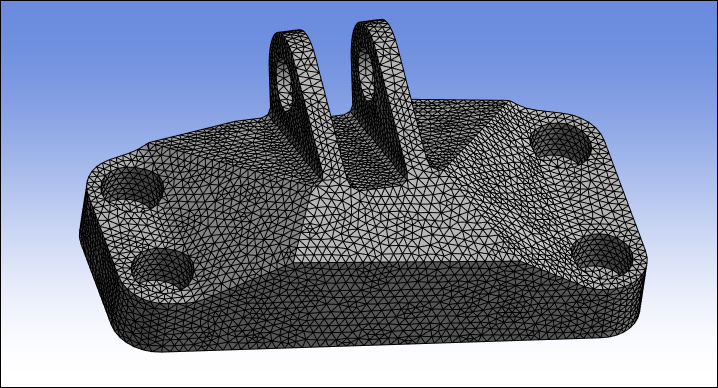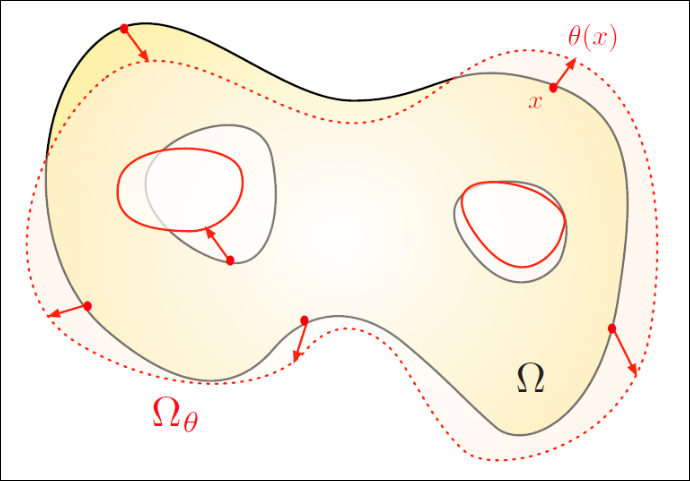The Shape Optimization method uses morphing optimization technology to process solid elements by varying the node locations.
Shape Description
For the Shape Optimization method, the shape is represented by a simplicial mesh
composed of
tetrahedral elements
.
| Conformal Tetrahedral Mesh |
|---|
|

|
Shape Evaluation
For this method, no special treatment is required to perform shape evaluation.
Note: An acceptable mesh quality is expected to be retained during the optimization process. However, excessive deformation of the shape may lead to large approximation errors in the finite element analysis.
Shape Derivative
The application computes the shape derivative using the continuous formalism
defined by Hadamard (see [5]).
That is, given a shape perturbation , the asymptotic expansion reads:
where:
The shape derivative usually admits the following form:
For the form, the integrand, , depends on the criterion,
, through both the solution state of the mechanical problem and
some corresponding adjoint-state.
| Shape Perturbation via a Vector Field
|
|---|
|

|
Note: To perform larger shape modifications and to avoid distortions that may lead to poor mesh quality, the shape gradient is extended inside the whole domain by solving an auxiliary problem [8].
Shape Update
The application creates the new shape by updating the position of the mesh
vertices using the shape perturbation , as:
where:
Specific programming is in place to preserve mesh-quality.
Summary
Degrees of freedom for this method are based on node location.
- Strengths
This method accurately computes any state variable given proper mesh quality.
Compared to the topology optimization methods, no numerical trickery occurs to evaluate the shape.
This method is rather dedicated for local and decent modification, but the implementation has proved to conveniently manage large shape changes without remeshing.
- Place in Design Stage
Used in the final stage of design process when local and decent shape adjustments are expected.
- Limitations
Finite element approximation errors could occur due to poor-quality mesh regions or if large modifications are made.
Because shape optimization does not manages topology changes, additional programming is in place to preserve mesh-quality. This factor can sometimes lead to additional computational requirements.
- Tips
Use a uniform mesh to equally capture geometric details.
References
[8] G. Allaire, C. Dapogny, F. Jouve, Shape and topology optimization, Handbook of numerical analysis, 2021.
[9] G. Allaire, M. Schoenauer, Conception optimale de structures, Springer, 2007.


